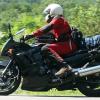Leaderboard
Popular Content
Showing content with the highest reputation on 06/11/2019 in all areas
-
GH5 to Alexa Conversion
Sage and 3 others reacted to Adam Kuźniar for a topic
Here's my recent video for a local culture organisation. The whole idea behind the event was to set up in 4 places in Wrocław at the same time and engage local communites in playing and singing songs. Shot on G80 in CineD, graded with CineD to VLOG PRE and GHa Daylight (Linear). Minimal adjustments done after. I absolutely love the results!4 points -
I didn't vote because you didn't put an option for "it depends".3 points
-
newbie questions / xt3 starter kit
Volumetrik and 2 others reacted to Caleb Genheimer for a topic
An important thing to understand with anamorphic is that you ALWAYS have to stretch the footage by the multiplication factor of the anamorphic for it to look right, regardless of sensor size or sensor aspect. After stretching, to achieve specific aspect ratios, you crop the image. That is, unless by stretching the footage, you hit your target aspect (which is rare). For example, on the P4K, I am always recording in 16:9 (aka 1.78:1). When I stretch the footage in post by 2X (because I have a 2X lens), it yields a 3.56:1 aspect ratio image. If I want my final video to be 2.39:1 (standard CinemaScope), I have to crop the sides off to achieve this. It is important to note that this cropping is not a negative thing! In fact, you need to understand it if you are going to get the most out of your scope. You see, I don’t care if the lens I’m using vignettes into the sides specifically because I know that I am cropping them off anyway. That’s how I can use a 28mm lens behind my Kowa. If I look at my direct sensor feed, there are large black sections on the left and right sides of the image. But on my SmallHD monitor, I have it set to de-squeeze and then crop to 2.39:1. In theory, this sounds scary, like you are throwing away precious pixels and information. In practice, it couldn’t be further from the truth. Your vertical line count of resolution is still exactly the same, because all the scaling happens only horizontally, so the perceived sharpness is the same. I would also argue that on compressed codec cameras, the black areas take a load off of the image processing, allowing more of the algorithm to be dedicated to a quality image in the center of your sensor. The vignetting is caused by the scope’s limitation, and correlates to a specific angle of view, regardless of sensor size. Mine would be approximately 28mm M4/3, 38mm S35, 56mm Full Frame. Those are the widest without vignette that the scope allows on each sensor size, without vignetting, when the final target is 2.39:1 aspect. And if shot side by side, they would appear as essentially identical/equivalent focal lengths. You can’t make any scope wider by changing sensor size. And remember: it is a 28mm lens in the vertical axis, but horizontally it is closer to a 14mm. It’s kinda one of my pet peeves when people say that 2X is “too stretched,” to be honest (though I understand you’re just learning how it all works.) That’s just not even a real thing if you understand how scope lenses work. 3.55:1 is obviously too wide a ratio to be using, but you just crop it. It’s as simple as that. You don’t loose anything by cropping, and in fact (as hopefully I’ve explained decently), you actually gain angle of view. You gain out of focus compression. You gain robust flares. You gain character. Because you crop more off the sides with 2X, you can shoot with more vignette and then completely get rid of it. Of course, if you are shooting with a 4:3 camera, that ends up as a 2.66:1 image when stretched, and to arrive at 2.39:1, you don’t crop off very much at all. But as I already ran through with focal lengths, you will arrive at the same maximum angle of view regardless of what size or aspect of sensor you shoot on, and you will always stretch it by a factor of 2. Cropping doesn’t impact that. There are some 1.5X lenses that get equivalent angle of view to the top dog 2X lenses, but guess what? Those are going to be the top dog 1.5X lenses like the Iscorama 36, and other even rarer lenses. The really good 1.5X lenses are much more expensive than the 2X ones, so if you’re on a budget, best of luck. The variable diopter allows you to take incredible blocks of vintage anamorphic glass and use it for filmmaking. It doesn’t matter that the glass is originally for projection, in fact, the image quality expectations for projection are, if anything, a higher bar. Some people see the dual-focus thing as an instant non-starter, but they are missing out on a look that otherwise only exists inside rental houses for very high day-rates. The new anamorphics are good, but not the same. A Kowa, Elmoscope, Moller, Sankor, etc. built in the 1980s just does that “thing” that made anamorphic famous in the first place. Those lenses are cut from the same cloth as all those lenses that shot (and still shoot) our favorite films. You should see if there is someone local to you that would meet up and let you test drive their 2X lens rig, so you can take the footage home, and play around with it. It’s much easier to wrap your head around all this by just using it, versus trying to explain it. It’s a wide angle adapter, but only horizontally. Vertically it has no angle change. To give you numbers that relate somewhat to your system, my Kowa with a 38mm lens on your S35 sensor camera, would horizontally be about a 19mm lens. Not quite the 17mm you are referencing, but not far off either. If you have a 19mm spherical lens and add black bars top and bottom in post so that it is 2.39:1, you’d see very close to what I see with my setup. Someone else can enlighten me if I am wrong, but I specifically have my lens because it gets as wide if not wider than pretty much every other projection scope out there. Genuinely not trying to be a downer, but scopes don’t go quite as wide as you’re hoping... at least not for prices that mortals can afford. They still go satisfyingly wide though, and at super wide angles with deep depth of field, the differences between anamorphic and spherical footage are hard to spot. Just shoot spherical and crop it to 2.39:1 if you need a specific shot that wide. There are flare filters, oval bokeh filters, and distortion in post if you really need your spherical shot to look the part. It is far more important to compose a good shot that serves the story you are attempting to tell, than it is to fret over exactly what pieces of glass you are shooting it through.3 points -
I guess it's best for you, wait for GH7 ?2 points
-
Panasonic GH5 - all is revealed!
webrunner5 and one other reacted to Adam Kuźniar for a topic
I do! I've been using my G80 both on YouTube and professionally and it's been working just fine but I figured with some cash flow I can finally realize my dream of owning the GH52 points -
It’s a tough one, I think 1080 upscaled to 4K can look pretty dam good.2 points
-
newbie questions / xt3 starter kit
Volumetrik and one other reacted to Caleb Genheimer for a topic
The top dog 2X projection scopes will give you the widest angle. You have to remember that you double your field of view horizontally. 1.33X/1.5X scopes may be compatible with similarly wide lenses, but they don’t increase your field of view by as high of a factor. On M4/3 with my Kowa I can go as wide as 28mm. That’s 28mm vertically. Horizontally it is 2X factor, so almost a 14mm. If there was something wider I would have bought it by now. The SLR Magics definitely aren’t. If it is the stylistic aspects of wide angle that you enjoy, rejoice! Anamorphic does similar things at all focal lengths. Slight barrel distortion, curved focal plane and bokeh field distortion. As others have said, don’t sweat the “single focus” crap. All anamorphics become single focus with a variable diopter. I run and gun mine all the time with an SLR Magic Rangefinder in front. The focus throw is long like a cinema lens, but that makes for smooth focus pulls. You are of course free to try a 1.33X lens, but in my experience they disappoint. They will not give you pronounced oval bokeh and always have thin flares. AKA what even is the point? It remains that if I need an ultra-wide lens for a specific shot, I just shoot spherical and crop the top/bottom to 2.39:1. I rarely need to go wider than my anamorphic allows though. Part of the beauty of anamorphic is that vertically it can be a portrait lens (50mm), while horizontally being a wide (25mm). They’re essentially a big hot mess of both at once. If you’re really in love with a spherical wide look, anamorphic might not be for you. It almost always looks “portrait-y,” even if the field of view is quite wide. The exception maybe being if you’re focused to infinity with nothing out of focus in the foreground, but in that use-case you would be hard-pressed to spot the difference between anamorphic and a spherical with some barrel distortion. I guess one question I have is, what is this “wide” you are in love with? What focal length on what size sensor? Wide is a general category of lens focal length, and can vary as much as anything.2 points -

your favourites vimeo videos
Video Hummus and one other reacted to webrunner5 for a topic
Well it is from YouTube. But this guys videos are probably just shot with a GoPro. But it is the story that makes his footage happen. I have watched some of his videos several times and it is simple as hell what he does, but boy you just want to find out what is the mystery in the end. It just proves it is all about the story, not what it was shot with.2 points -
AIVASCOPE 1.5x anamorphic lens, 1st hands-on !!!!
Sebastien Farges and one other reacted to BrooklynDan for a topic
Looks pretty sharp. Apparently, it was optimized for full frame sensors, so it can handle M4/3 no sweat. The built-in focus gear, close focus and non-rotating front makes it more practical than the Iscorama ever was. Looks like a win!2 points -
newbie questions / xt3 starter kit
Volumetrik and one other reacted to Caleb Genheimer for a topic
Everyone will have a slightly different opinion on this, but I would pretty much say if you’re after anamorphic in 2019, it is for the stylistic optical idiosyncrasies historically associated with Hollywood’s long-standing use of 2X squeeze factor lenses. 1.33X squeeze factor lenses will get you a very mild/watered down version of that look, and in most cases will end up being almost as expensive as 2X options, or will be poor quality optically. 1.5X lenses can be great, but there were never many made, so they fetch a high price. Good 2X adapters are well-regraded at this point, and you’ll be hard pressed to get one for a truly “budget” price. But there are still a decent quantity of quality examples floating around. All this being said, they are priced as they are because the resulting look is absolutely worth it, and they are still priced low enough that they are accessible. Your best compromise is probably a smaller 2X, for example, a Sankor or Kowa 16-s. You won’t be able to use as wide of back lenses without vignetting, but the image quality is still top notch. If you decide to jump right in, the top dogs would be the Kowa Bell and Howell, Kowa 16-H, and the Isco Ultra-Star. If you are seriously shopping, get the @Andrew Reid anamorphic guide, and watch @Tito Ferradans YouTube channel. To use these projection scopes reliably, you need good clamps. Redstan are top of the line for Kowas, and HTN has a great locking front replacement lens body that gives you standard threads while also locking the focus. The budget variable diopter is the SLR Magic Rangefinder. It resolves excellently and increases vignetting minimally, but the coatings produce flaring that some find difficult to work with. The king of variable diopters is the Rectilux Hardcore DNA, but it is priced accordingly and is only made in small batches with a waiting list. You are going to want one of these two. Double focusing is a pain and almost impossible to get perfect. It can be the last item you buy, and you can get used to anamorphic without it, but you will need one. Expect to spend at least $1500 by the time you have a scope, clamps, variable diopter, and a prime taking lens that plays nice with your scope. That’s scraping the bottom of the barrel and getting lucky, but as lens prices go, that’s really not crazy money. $2500 or maybe a couple hundred more should be enough to get you into a good Kowa with a desqueezing monitor and all the extra goodies. There is a new line of 1.8X primes coming out that’s running just over $3000 per lens. I’m planning on transitioning to a set of those, but they’re for m4/3 sizes sensors. There’s a certain economy about the projection adapters, considering the same anamorphic block can be attached to your prime lens of choice for the various focal lengths, but at a certain point, dealing with countless clamps and adapters can get tiresome, and the lens rigs can get long and heavy. Ultimately, projection scopes are not well-suited to a truly professional style production. They’re perfect for passion projects and style-centric work like music videos, short films, etc. A crafty person who has good problem-solving skills can absolutely DIY some of these things and potentially save a little bit of money, but as I’ve pointed out, there are tried-and-true solutions already on the market for reasonable prices. I for one would say you’re lucky, even if the prices are now higher on the actual scopes. when I got into it, Redstan was the only good clamp option even though they didn’t have support brackets back then, and variable diopters weren’t even a thing. There were no affordable monitors with anamorphic desqueeze. now you can pick up a SmallHD Focus (which I would highly suggest you do), and it will serve you well in all your production, not just for anamorphic desqueezing. If I have one serious piece of advice, it is that cheap clamps will make your experience miserable. Get a lens clamp that can clamp down to 15mm rods. Sloppy loose lens rigs make for unusable footage with jolts in it, and clamping to rails ensures that, once aligned, your anamorphic will remain aligned. No “parallelogrammed” footage.2 points -

AIVASCOPE 1.5x anamorphic lens, 1st hands-on !!!!
keessie65 reacted to Sebastien Farges for a topic
AIVASCOPE 1.5x anamorphic lens, 1st hands-on https://vimeo.com/341289409 I just had the chance to film with the new Aivascope 1.5x anamorphic lens on my Panasonic GH4. It’s a very sharp lens working great with some of my primes. It’s a single focus lens (you do the focus on it and let the prime on infinity) In this movie you will see different shots done with : GH4 4K uhd (no CC) 24p Lumix 20mm f1.7 btw f1.7 and f4 Pentax-m 40mm pancake f2.8 at f4 Sicor-XL MC 28mm f2.8 at f5.6 Despite the fact the Pentax-m 40mm is less wider than the others, I like the result with it and the Avaiscope. I’ve used a Dorr variable ND lens, on the GH4 the picture mode is on « portrait » with slight ajustments. I did no color corrections at all. I will do some test on full frame camera later. Thanks for watching. Heres is the characteristics of the Aivascope 1.5x lens : Designed for Full Frame systems. Recommended taking lenses for full frame (16:9 aspect ratio) from 50mm to 90mm Single focus From 80cm to infinity. Non rotating front element. Focus ring rotate 190 degrees. Lens mounting clamp 52mm Filter size 82mm Weight 700 gr. Integrated focus gear. Price : 2 250,00 € Aivascope facebook page : https://www.facebook.com/aivascope/ thanks to Aivascope, Marguerite, Nina, the graphers and the people of Bordeaux and Floirac. a Seb Farges Movie music : Corrina Repp "The Beast Lives In The Same Place" Amplitude Problem "Into The Night (Instrumental)" 08th june, 20191 point -
newbie questions / xt3 starter kit
thephoenix reacted to Caleb Genheimer for a topic
That’s good to hear, for 2-3K you will end up with a very useable setup as good as anyone’s. Another thing that doesn’t work well with anamorphics is zoom lenses. There are some exceptions, but I would not start there. You probably already have good lenses for anamorphic just sitting around. 1950s-1980s primes anywhere from 35mm to 85mm are perfect candidates. They’re the one great budget aspect of anamorphics, as most people give them away. You become that person that everyone gives their old SLR kits to that have been sitting in grandpa’s closet for 30 years. Different primes will give you different flares, different contrasts, different color rendering. It’s fantastic to be able to shoot anamorphic in a wide variety of styles. A box full of old primes provide a wide palette of stylistic options. The one thing they hadn’t figured out back then was how to make good fast and wide lenses. Guess what? Anamorphic makes normal lenses wide. Problem solved. It is easiest to have smaller diameter front elements on the lenses that you use, but not critical. I’ve seen a Sankor on a Canon 70-200 f2.8L. Looks ridiculous, but apparently works fine. You won’t vignette, but you may loose some T-stop (light transmission). f-stop should be unaffected. My personal recommendations are: Kowa 16-H, or Kowa 8Z, or Kowa for Bell and Howell Redstan brand rear clamp with support bracket Redstan brand front clamp or an HTN brand lock ring (this second option replaces the Kowa front housing with one that has standard front threads, as well as male outer threads for attaching the common variable diopters. It also locks the lens at infinity which you do when using variable diopters.) Rectilux Hardcore DNA or SLRMagic Rangefinder. SmallHD Focus monitor Beyond that, a 15mm rod/rail setup will help keep everything rock solid and properly supported. That’s the best out there, and the core of what I would advise to have a hassle-free setup. Kit it out further per your preference with cage, handles, shoulder pad, follow focus, mattebox, filters, etc. I’ll double down on suggesting @Andrew Reid‘s Shooters Guide. It will save you more money through its advice and content than you will spend on the guide itself. He has boiled it down to the noteworthy scopes and breaks each one down spec-wise, as well as including a lot of general guidance for using anamorphic lenses.1 point -
newbie questions / xt3 starter kit
thephoenix reacted to Caleb Genheimer for a topic
Anyone telling you that you have to match your sensor aspect with the appropriate stretch factor is a lazy slob. Plain and simple. 1.33X is not a classic anamorphic ratio. It is from the awkward days of 4:3 CCD camcorders and people wanting them to be 16:9. They’re just tools for achieving that without losing resolution because resolution was so low back then. Now we have 4K. Now we have desqueezing monitors. You may be able to use a 1.33X with a slightly wider lens than a 2X, but remember you are not increasing angle width by a factor of 2. You are increasing it by only 1.33X. The 2X lenses in most cases will gain back the difference once you do the math. A Panny LA-7200 1.33X (the widest anamorphic I am aware of) can handle a Tokina 11-16 on M4/3. But the optical quality is just exactly good enough for those CCD chip cameras... so not very good. On full frame it possibly gets as wide (after factoring 1.33X) as 16mm. But you’re better off using a spherical and cropping, because the 1.33X doesn’t look very distinctly anamorphic, and it will give you image quality headaches. 4:3 mode in-camera DOES. NOT. MATTER. You know why? Guess what that is doing? It’s cropping the left and right off of your image to make it a different aspect. It’s the same wether you do it in camera, as if you do it in your editor, as if you do it by cutting the sides off of your printed image with a scissors. It is all the same. Doesn’t change a thing. If you want a 2.39:1 image from a 2X lens, you will be using a 1.2:1 ratio portion of your sensor, always. Doesn’t matter how you arrive there. Yes, being able to record directly in a 4:3 mode in camera does have mild conveniences. Yes, if your 4:3 mode uses more of the sensor’s vertical area, you are gaining some sensor size. But it REALLY doesn’t matter. Are you wondering why people use vintage scopes? Or why they use vintage lenses behind their anamorphics? New scopes are expensive, and still haven’t surpassed (or even caught up to) the quality of vintage projection scopes. The day they do is the day I switch, but it hasn’t happened yet. Anamorphics work best through simple optics. High element count multicoated aspherical modern designs often don’t react well to having an old scope in front. I get by far the sharpest and richest results using good vintage prime lenses, especially pancake lenses. They just work best.1 point -

Panasonic GH5 - all is revealed!
webrunner5 reacted to kye for a topic
Cool!! Stop thinking about cameras, and start thinking about making awesome films.1 point -
The overhead in post is certainly much better with a 1080p workflow. I would argue the improved post overhead is a much greater difference that any perceptible difference in image quality. Keep in mind, if the target audience is YouTube, a large percentage of mobile devices... including all iOS device, do not support resolutions beyond 1080p.1 point
-
newbie questions / xt3 starter kit
thephoenix reacted to leslie for a topic
calebs given you some good advice, as i understand it 1.33 anamorphics are kinda made for your 16.9 format. there is less stretch so less cropping required on a 16.9 format to get the desired 2.39.1 format. 2x scopes are more suited to 4.3 format, that being said the only issue is what you have to crop at to get to your final desired aspect ratio. which depends on your anamorphic stretch . If your coming from a photography background and you see the word cropping. Your first thought is probably that you will lose resolution however this is not the case with anamorphics. The only other concern is the visual differences between 2x and 1.33 the bokeh is nicer on 2x and stronger flares as well i think. One other consideration is flare colour most anamorphics flare blue, not many flare gold or orange as i understand it . if i shot a lot of sunsets or had enough money for another projection lens that eiki sankor 16f would be on my short list as it has amazing flares for sunsets but that might be just me.1 point -

newbie questions / xt3 starter kit
thephoenix reacted to heart0less for a topic
Join Anamorphic Shooters group on Facebook and look for more info there. Almost every question of yours have already been asked and answered many times. 420€ for Sankor 16F (even with front and rear Redstan clamps [which, by the way, are the best clamps possible]) is a bit pricey. I wouldn't pay more than 300€ for this combo.1 point -
It's so dependent on your equipment and delivery format. If you're shooting 4k on an iPhone but 1080 on a BMPCC then 1080 will win. If YouTube is the endgame, 4k is most likely better.1 point
-

newbie questions / xt3 starter kit
thephoenix reacted to keessie65 for a topic
I have X-T3 and before Samsung NX1. Both APSC format sensors. I always filmed with 1.5x stretch scopes. Works perfect, only sidewise a bit cropping. vimeo.com/keeswaque1 point -
I agree the one x style cameras is the future of action cam and for some usage even normal camera. I have one and once reframed the quality is just barely usable but it is so much easier to film especially for things that you cannot retake.... making timeshift with this is soo easy... you can also mimic gimbal and drone shoot (using a long pole) with ease. Workflow could be better... lcd is almost useless as lowlight.... but reframing in post is just more easy and convenient.... similar form factor with 1inch 8k 24/5 fps and 5.7k 50/60fps I would buy even for 4 time the price1 point
-
AIVASCOPE 1.5x anamorphic lens, 1st hands-on !!!!
Sebastien Farges reacted to SebYT for a topic
Whoa so this is basically like a modern day Iscorama? Sweet1 point -
Z Cam's Super 35mm 6K camera for under $3K: the "Z Cam S6"
billdoubleu reacted to AlexTrinder96 for a topic
1 point -
Panasonic GH5 - all is revealed!
tonysss reacted to thebrothersthre3 for a topic
The funny thing is I don't think you can go wrong with almost any current camera nowadays. You'll kind of be set unless things change so much that people only watch things in 3D or something. Creativity is the biggest limit. Imagine 25 years ago when all you had to make a quality looking movie was shooting on film. We have it incredibly easy nowadays.1 point -
Fire away, I've just seen a grown man riding a skateboard through an airport while pulling his suitcase fall off it and take out another grown man on a skateboard filming him so nothing is going to impact my bliss now.1 point
-

The new Mac Pro + 6k monitor has landed - introducing the Cheese Graters
kaylee reacted to William Koehler for a topic
I would like to personally congratulate Apple on making a custom fully loaded ThreadRipper system look like the bargain basement option.1 point -
Fuji X-T3 and X-T4 discussion
proteanstar reacted to Attila Bakos for a topic
I friend of mine has a bit of electrical engineering knowledge, he created a cable that allows me to control the X-T3's shutter and focus from the Zhiyun Crane Plus. It works on the Zhiyun Crane 2 as well. He won't create another one but I can ask for the wiring diagram if anyone's interested. It needs an optocoupler and a couple of resistors, so a part of the cable will be thick, but it's not a real problem.1 point -
New Redstan Kit!
thephoenix reacted to Caleb Genheimer for a topic
The one and only Redstan has a host of new products out on their website which I haven’t seen mentioned anywhere yet. For those that don’t know, Redstan have always been the OG maker of snug slip fit projection Ana clamps. Especially exciting to me are the clamps with support feet, as they allow you to tighten things down to a set of rods and eliminate mount/adapter slop. Some things are listed as limited runs, so I’d snag em quick if you’re interested. http://www.redstan.com/index.php?route=common/home1 point -
Help The Camera Manufactures Choose Must Have Features
sanveer reacted to ade towell for a topic
Canon stills cameras have nowhere near 13 stops of DR, as well as their soft hd the lack of DR has been the hardest thing to deal with when trying to match them with other cameras. Nikon have always been a bit better and then using log with Fuji xt3, Sony A6300 and A7 with slog (although the 8 bit has issues), and now finally the S1 has brought DR up to that 14 stops benchmark1 point -

Help The Camera Manufactures Choose Must Have Features
sanveer reacted to Mako Sports for a topic
Not running dual card slots is risky af. Run a single slot, have a bunch of corrupted video files and what do you tell the client? "Most pros don't run dual slots" Even if you have the time and money to reshoot, good luck convincing them to hire you again after that.1 point -

Help The Camera Manufactures Choose Must Have Features
sanveer reacted to Andrew Reid for a topic
Interesting stuff. I think colour science is a big one. Comes for free with RAW, but what I'd like to see is the ability to bake a LUT into a ProRes recording in-camera. Saves grading time in post and speeds up the edit. Dual Card slots causes a big hype and debate... I think that's why people feel it is overrated. I think it's a small feature but a critical one for pro work. If a single card does fail then it's an irreplaceable data gone and imagine if you lose somebody's wedding... disaster. There is no need NOT to do dual card slots on a pro camera, especially a $3000+ one, and it has hurt the Nikon Z series so badly in shops with photographers. I think it could be interesting to split a poll up into sub-categories, as big features lumped with small features will always show the big features coming out on top, but that's not to say smaller features aren't also important.1 point -
.thumb.jpg.c38e420d42fbcfca0e9d71918fb899b0.jpg)
GH5 to Alexa Conversion
Adept reacted to Wild Ranger for a topic
1 point -

X-T3 h.265 crushed blacks clipped highlights on macbook pro
Kubrickian reacted to fuzzynormal for a topic
Y'all are probably well aware of this suggestion, but FWIW, I always lift my darker levels a bit with Fuji files in Premiere using "fast color corrector." I'll push "output" blacks up 8 and bring down the highlights to 235. From there I'll tweak some mids too, depending on what I'm trying to match. FUJI colors are nice, but the levels from my X-Pro2 are quite different compared to what comes out of other cameras. None of this is probably germane to your problem, but if you can recover your details in h.265 to your preference and the issue is at least consistent, you'll have a rough work-around. These sorts of hardware/maths issues are why, even though it's painfully slow, I typically like to render my important work using "software only." That might be worth a test. I know my PC does all sorts of frustrating things when I'm trying to export using hardware acceleration. So much so I just can't trust it.1 point



.thumb.png.b3d2eb1517c107de50af8fbd141249e4.png)
.thumb.png.f03cebcdaf8a9ba2f904e9fe08568e8d.png)